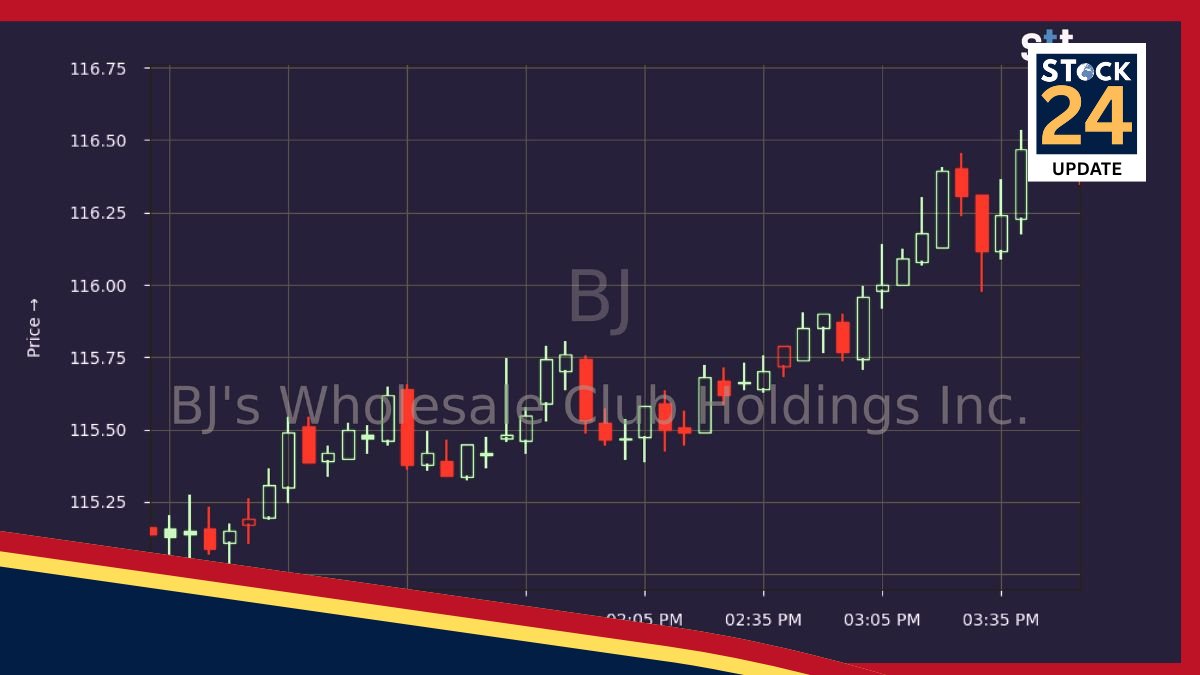
Shares of membership-based retailer BJ’s Wholesale Club (BJ) took a hit in recent trading, falling 3.7% in a single morning session. The catalyst was a significant announcement from e-commerce titan Amazon (AMZN), which unveiled an aggressive expansion of its same-day grocery delivery service to more than 3,300 cities across the United States.
The news sent a ripple of concern through the entire grocery industry, as Amazon’s push directly challenges established players by offering perishable items like fresh produce, meat, and dairy. The competitive pressure was felt across the board, with related stocks such as Instacart (CART) and Kroger (KR) also experiencing declines.
For investors, sharp market reactions often raise a critical question: is this a temporary overreaction or the beginning of a fundamental shift? Let’s analyze the factors at play for BJ’s Wholesale Club.
What the Market Is Telling Us
While a 3.7% drop may seem modest, it is significant for BJ’s, a stock not known for its volatility. Over the last year, the stock has only made a move greater than 5% on four occasions. This indicates that the market views Amazon’s expansion as a meaningful development, even if it doesn’t fundamentally alter the long-term perception of BJ’s business model.
When big news causes a stock to drop, savvy investors often see a window to acquire shares of a high-quality company at a discount. The key is to determine if the underlying business remains strong.
A Look Under the Hood: BJ’s Resilient Performance
Despite the recent pressure, a look at BJ’s recent performance reveals a resilient and growing business. Just five months ago, the stock surged 13.2% after the company reported a strong fourth quarter that exceeded Wall Street’s earnings per share (EPS) expectations.
Key highlights from that quarter include:
Strong Comparable Sales: Comparable club sales (excluding gasoline) jumped an impressive 4.6%, driven by increased foot traffic.
Digital Growth: Digital sales soared by 26%, a clear sign that BJ’s is successfully engaging customers online and competing in the e-commerce space.
Engaged Customer Base: The growth in both foot traffic and digital sales points to a loyal and active membership.
While total sales dipped 1.5% year-over-year, this was primarily due to a shorter fiscal quarter (one less week), not a decline in performance.
Balancing Optimism with Caution
However, it’s not all smooth sailing. Looking ahead, BJ’s full-year EPS guidance fell short of analyst forecasts, signaling potential concerns about margin pressures and the impact of broader economic uncertainty. This cautious outlook, combined with the new competitive threat from Amazon, is likely weighing on investor sentiment.
Currently trading around $105.23, BJ’s stock is up a healthy 19.3% since the beginning of the year. However, it remains about 12.3% below its 52-week high, suggesting there could be room for growth if it can navigate the current challenges.
The Investor’s Perspective: A Long-Term View
For those with a long-term horizon, BJ’s has a proven track record of delivering value. An investment of $1,000 in BJ’s shares five years ago would be worth approximately $2,591 today, showcasing its strong growth over time.
Ultimately, investors are left to weigh the short-term market fears against the company’s long-term fundamentals. The central debate is whether Amazon’s logistical might poses an insurmountable threat, or if BJ’s proven ability to grow its membership, increase in-club traffic, and rapidly expand its digital footprint makes this temporary dip an attractive opportunity.





